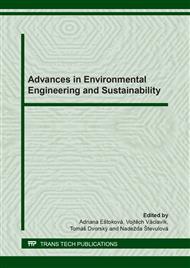p.3
p.10
p.23
p.31
p.39
p.46
p.53
p.59
p.67
Trends in the Use of Cement Bypass Dusts for their Application in Construction
Abstract:
With the innovations in the field of building materials production, some by-products or wastes are also generated. This is closely related to the need for adequate environmental treatment of these products. One such product is by-pass dust from cement production, which can be characterized as a fine-grained material consisting mainly of Ca, Mg, K, S and Cl oxides. Bypass dust has high alkaline reaction due to its composition; therefore careful research is needed to assess its properties and subsequent practical use in the construction industry. Preliminary results of composites prepared on the basis of bypass dusts and other selected fly ash are discussed. The main aim of the experiments was to verify the possibilities of bypass dust utilization as partial substitution of cement in the preparation of composites. The composites prepared with different water/cement coefficient were tested for compressive strength of 28 days of hardening. It has been shown that a mixture of bypass cement dust and selected ashes can be used as a partial binder substitution up to 33% weight of cement, which can represent considerable benefits for practice. Preliminary investigation at the same conditions revealed that water/cement coefficient will need to be optimized in further research.
Info:
Periodical:
Pages:
39-45
Citation:
Online since:
April 2020
Authors:
Keywords:
Price:
Сopyright:
© 2020 Trans Tech Publications Ltd. All Rights Reserved
Share:
Citation:


